Attractions
take a look at our attractions all over Egypt!
Cairo and around
Cairo was once acknowledged by Medieval Arab historians as “The Mother of the World”. Today Cairo is a city where ancient, medieval, and modern architecture are intertwined.The Pyramids, The Sphinx, The Egyptian Museum, Early Christian churches, and Medieval Mosques. Alongside Old Markets, Alleys, Medieval Houses, Modern Five Star Hotels, Shopping Malls, Restaurants, Cinemas, and Theatres.As well as over 20 million people all living in the wonderful city we know as Cairo. Upon arrival, the chaos on the streets hits you in full force. It doesn’t take long, however, to acclimatize to Cairo’s wall of noise.Of course, as in most megacities of the world, the Pollution in Cairo is high, but there are still places where the soil still produces lush vegetation, and the Nile never ceases to inspire us.The areas around Cairo are considered to be the Heart of Egypt, and one may find almost every aspect of Egypt represented in the area, including some of the most famous Pharaonic, Ancient Christian, and Islamic monuments.
WHERE TO GO
Head West to Giza’s famed Pyramids and imagine life 4,000 years ago. Although most tourists associate Egypt with the Pyramids of Giza there are known to be at least 118 ancient pyramids scattered around the country, with more being discovered every few years. The metropolis of Cairo is packed with soaring minarets, Medieval Schools, Mosques, Churches, and Synagogues. Religious beliefs here are strong and the people proudly preserve their religious heritages.The city mixes modern religion with ancient traditions as easily as its streets accommodate Mercedes and donkey-drawn carts.
Areas of Cairo
Greater Cairo consists of 4 main Governorates, Giza, Shubra el-Kheima, 6th of October, and Obour, which then divides into suburbs such as Badr, New Cairo, Shorouk, and Madinaty.
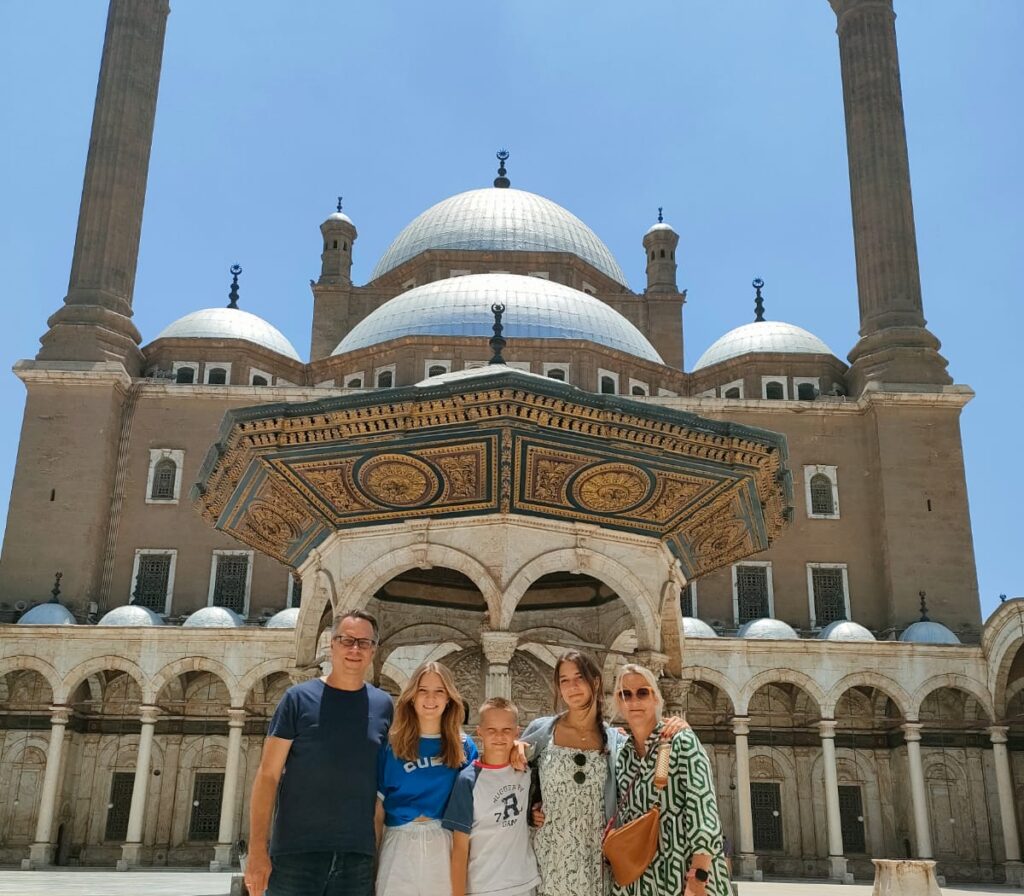
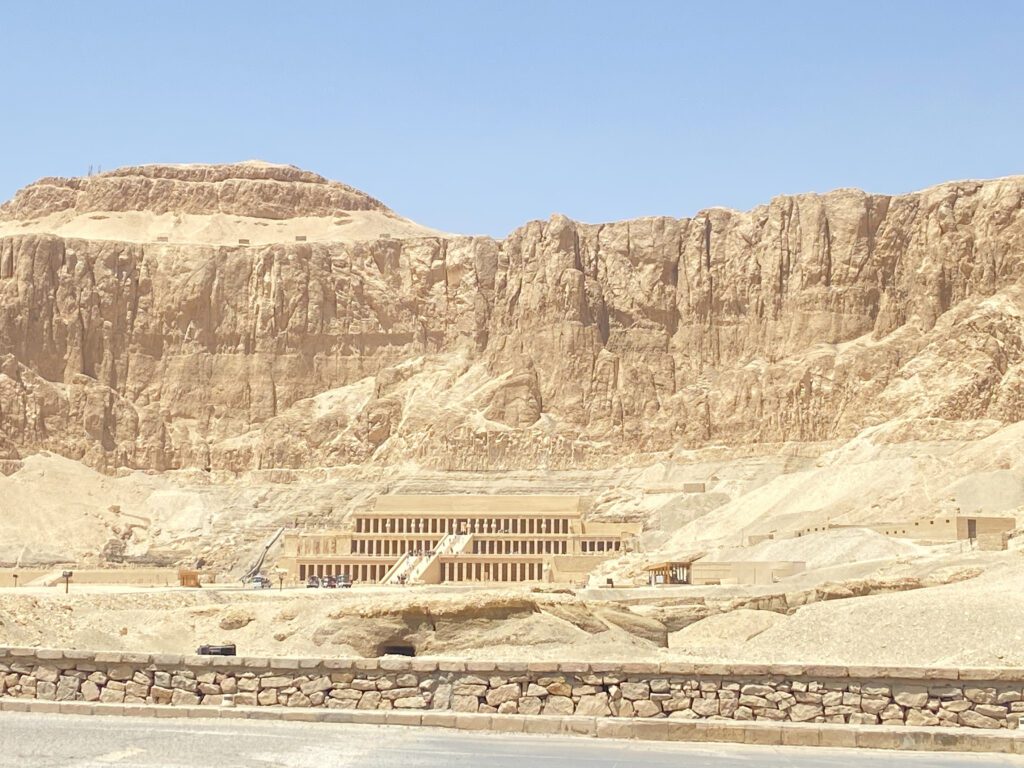
Luxor
Luxor has been known as Thebes, the great capital of the Egyptian Empire; Waset, meaning “city of the sceptre”; Ta ipet, meaning “the shrine”; the “city of 100 gates,” and many other names throughout its history. Luxor is derived from the Arabic word for “palaces.”It rose to prominence around 3000 BCE and eventually became Ancient Egypt’s political, military, and religious capital for more than 1500 years. It is an important tourism center today, as it is home to a large number of the country’s architectural monuments.Luxor has an unrivalled number of ancient Egyptian monuments. The 3,400 year old Luxor Temple and the Karnak Temple Complex are among its highlights, as are the necropolises of the Valley of the Kings and the Valley of the Queens, and the massive stone statues known as the Colossi of Menmon.
Aswan and Nubia
Aswan, formerly known as Swenett, is a delightful city in southern Egypt. The name Aswan is derived from the ancient Egyptian word “Soun,” which means “market” or “souk.” Aswan got its name from being a strategic gateway to the south. It was the primary source of granite used for obelisks and sculptures in ancient times.Aswan is well-known for its stunning Nile Valley scenery, significant archaeological sites, and serene atmosphere. Its weather is mild all year, making it an ideal winter destination.
Aswan has many significant archaeological sites close to the modern city, which can be reached by smaller boats or by land, and is also your first step to sites in the far South, including the temples of Philae and Kalabsha and, with a longer drive, the temples of Abu Simbel. For those interested in more recent construction and how the changing flow of the Nile has influenced Egyptian history through to today, the High Dam can be visited on the trip to Abu Simbel.
Aswan’s Nubian culture is an aspect of Egypt that everyone should have an introduction to. We can walk through the villages and also visit Animalia House Museum, which is an excellent place to learn about Nubian culture and the changes that came about with the building of the High Dam.
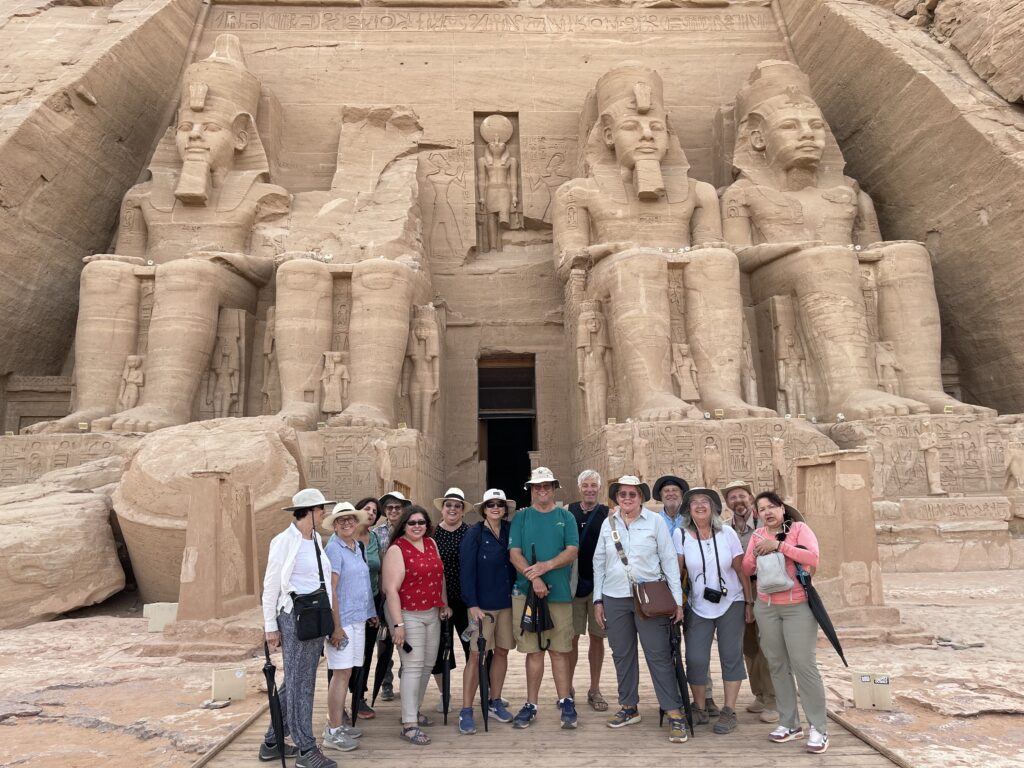
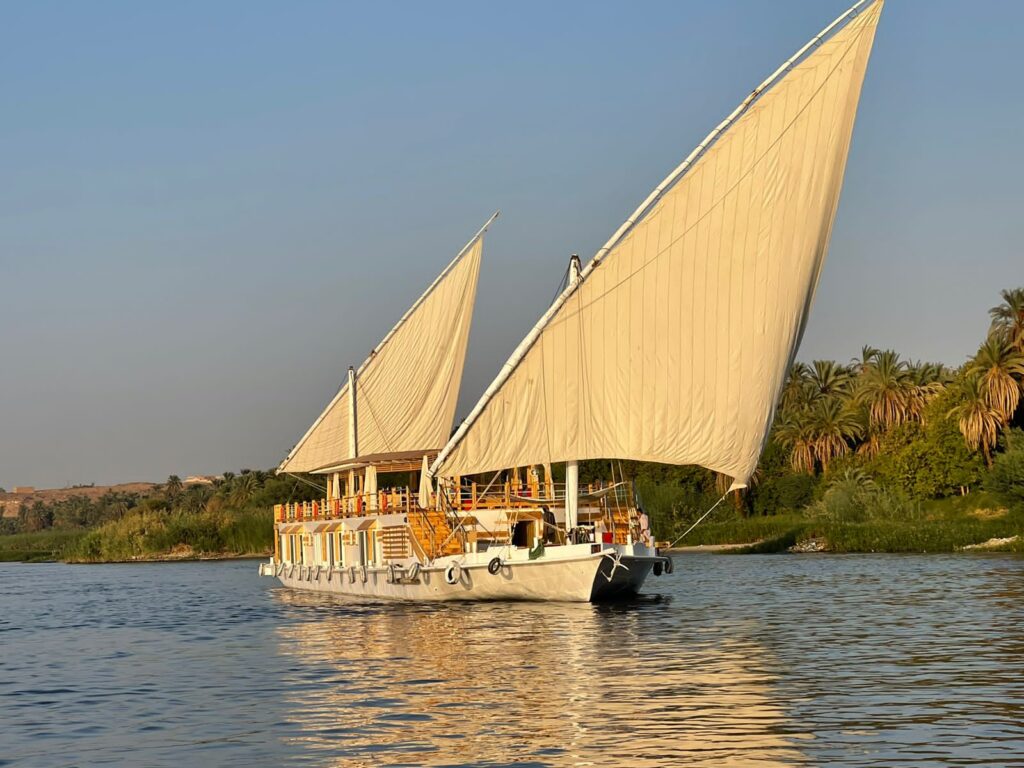
Nile sailing
For centuries, the magnificent Nile River has captivated travelers and imaginations as the longest river and the source of life for one of the oldest civilizations in the world. Few experiences are better than sitting on the deck of a slow-moving boat as it glides along the Nile. Gaze into the fertile Nile Valley that is surrounded by desert, drifting past 5,000 years of culture. Sailing down or up the Nile is the best way to explore Southern Egypt. Board at Esna just South of Luxor (transfer is provided for those not already on tour with Real Egypt) and visit important sites including Edfu, Kom Ombo, and Aswan. On our Dahabiya Nile Sailing tour you will visit more sites and communities.
On a longer cruise of 15 days from Cairo to Aswan you will also stop at Minya and visit more significant sites nearby.
Nile Sailing varies considerably, it is possible to cruise from 1 day to 15 days. There are over 330 cruisers plus the Dahabiya boats, Sandals and Fellucca’s plying the river between Cairo and Aswan.
Nile Valley and Delta
Nile Valley – North of Egypt all the way down to Aswan anywhere the Nile flows through, off the beaten tourist track but sights can be added to the main tours.The Delta, a lush green triangle set in a desert landscape, Delta fans out between the two main branches of The Nile. Ramses II ruled from here three thousand years ago. Now The Delta region produces the bulk of the country’s crops, helping to feed the huge population. Egypt has been called the gift of The Nile, for without the river it could not exist as a narrow and verdant strip of cultivated lands cuts through the arid country. The whole of the Delta is farmland, irrigated by a web of tributaries and canals, and is said to be one of the most fertile agricultural regions in the world.In ancient times a great civilization flourished along the river’s banks and the incredible wealth of temples and tombs left behind, make the Nile Delta and valley the greatest open-air museum in the world.Middle Egypt is chiefly known for its temples at Abydos and Dendara, tourists also like to visit the Tombs of Beni Hassan and the ruins of Akhenaten’s capital at Tell el-Amarna. Almost every Nile town is built upon layers of previous settlements, Pharaonic, Ptolemaic, Roman, and Coptic.
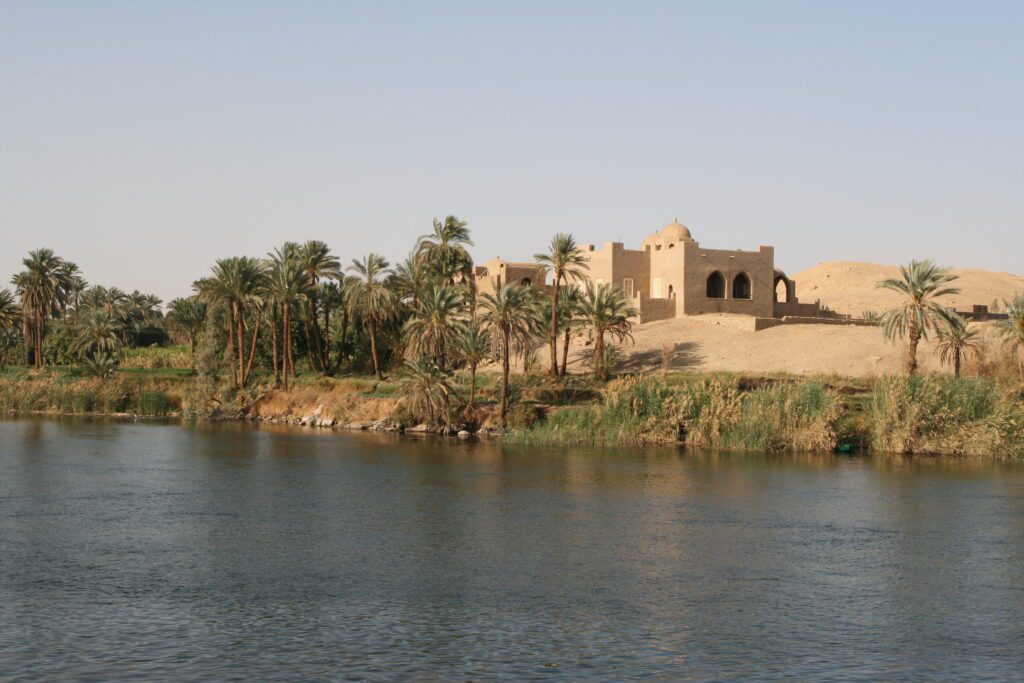

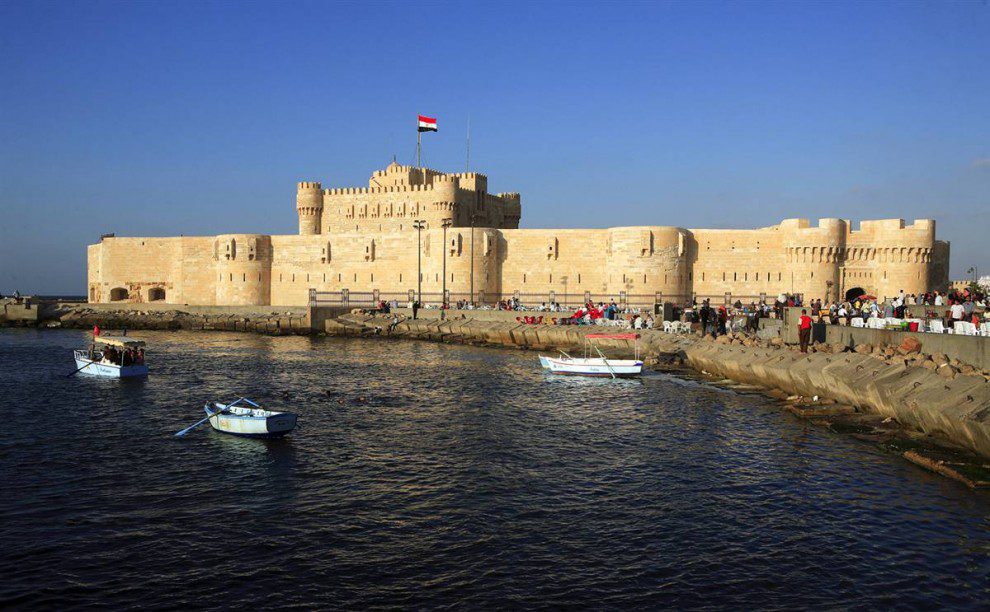
Alexandria and Mediterranean coast
Alexandria is one of the most well-known names when it comes to tourism in Egypt, and rightly so. Out of the twenty-four cities across the world, Egypt’s Alexandria is the oldest and most famous of them all. Its history, ancient architecture, beaches, and atmosphere fascinate all who come to visit. With its Ancient library and lighthouse, Alexandria was the centre for trade, learning and culture in the Ancient world.
Founded in 332 BC by Alexander the Great, after whom the city is named, Alexandria was the capital of Egypt for almost a thousand years, extending about 32km (20 miles) along the Mediterranean Sea coast.
People of Egypt envy Alexandrian’s for living in such a beautiful city. It has a different character than the rest of Egypt, due to being the main harbour connecting Egypt with the world for thousands of years. In summer, people from all over Egypt rush to the city to enjoy its beaches, atmosphere and cooler climate. In modern history, it’s the most famous and most beautiful cosmopolitan city around the world, where art, architecture and wealth intertwine together.
Red Sea and Sinai
Treasured in Pharaonic times for its turquoise, copper, and gold quarries, the region today is a magnet for tourists who are attracted by the sandy beaches and fantastic marine life.
Sinai is a region of great religious significance: its rugged interior was the setting for many important events in The Bible and it remains a holy place for Jews, Muslims, and Christians, due to the wanderings of Exodus and the flight of the Holy Family.
Famed for its triangular-shaped peninsula and has been the gateway between Africa and Asia since time began. About 61,000 sq. km. (23,552 sq. miles).
The Sinai Peninsula is prized for its strategic position and mineral wealth. Where rock meets coral reef and the desert stops at the sea. It is the grandeur of granite meeting golden beaches.
The Red Sea coast stretches 1250km. (777 miles) from Suez to the Sudanese border, it offers superb diving and snorkeling along with palm-fringed beaches. Resorts along the coast are varied to suit every taste.
Its mineral-rich red mountain ranges and coral reefs inspired the mariners of long ago to name the sea “The Red Sea”.
Diving in the Red Sea can be one of the most inspirational experiences of your life. The Red Sea is a spectacular ecosystem formed millions of years ago when the Arabian Peninsula broke off from Africa as a result of the movement of the Red Sea Rift.
Along the coast, turquoise waves lap rocky headlands and windswept beaches, while inland the Nile Valley is divided from the coast by the arid hills and mountains of The Eastern Desert, home to the Red Sea Monasteries.
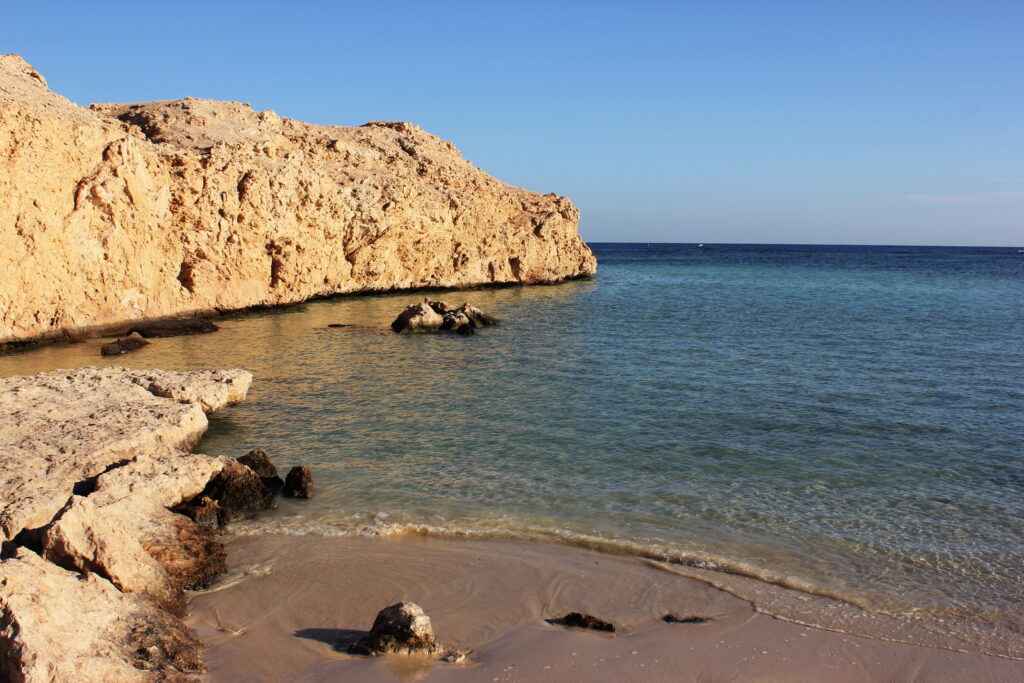
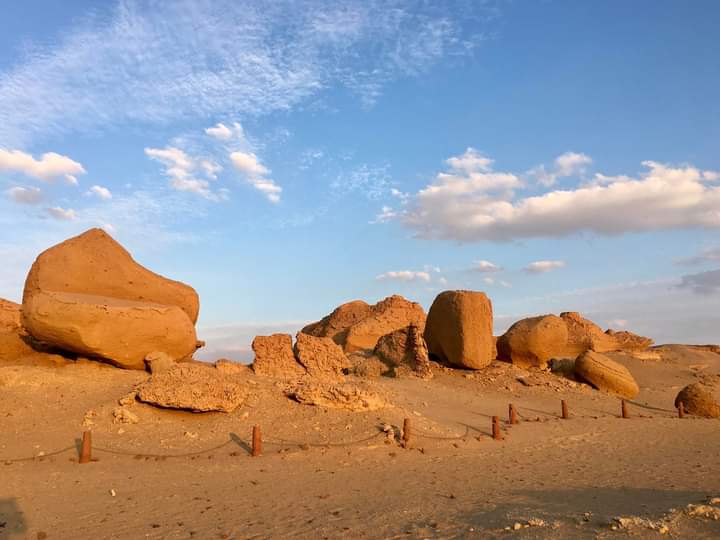
Desert Safari
Safari tours offer visitors the chance to escape the crowded sites of Cairo and the Nile Valley and experience the peace and tranquillity of the empty desert and its green Oasis.
The popular image of the desert is of endless seas of sand. However, the vast expanse of rock in the interior of the desert is considered a part of the desert.
Apart from the new Bedouin desert-dwellers, the area is uninhabited.
Deserts provide the perfect atmosphere for some really interesting activities and great adventures. Fayoum is the closest desert area to Cairo and provides a wealth of history mixed with desert adventure.
You’ll have a chance to feel the adrenaline rush while driving on the crest of a sand dune or sliding down the dune, or sand surfing. There will also be chances of seeing indigenous wildlife.
You’ll meet Bedouin people and see their interaction with the environment, and enjoy the desert way locals would around a campfire at night. You can experience the clearest night skies as you drink traditional Bedouin tea and enjoy a traditional dinner slow-cooked in the heat under the sand.
A popular desert safari activity is sandboarding. Sandboarding is a slightly more forgiving version of snowboarding but gives a similar adrenaline rush.
